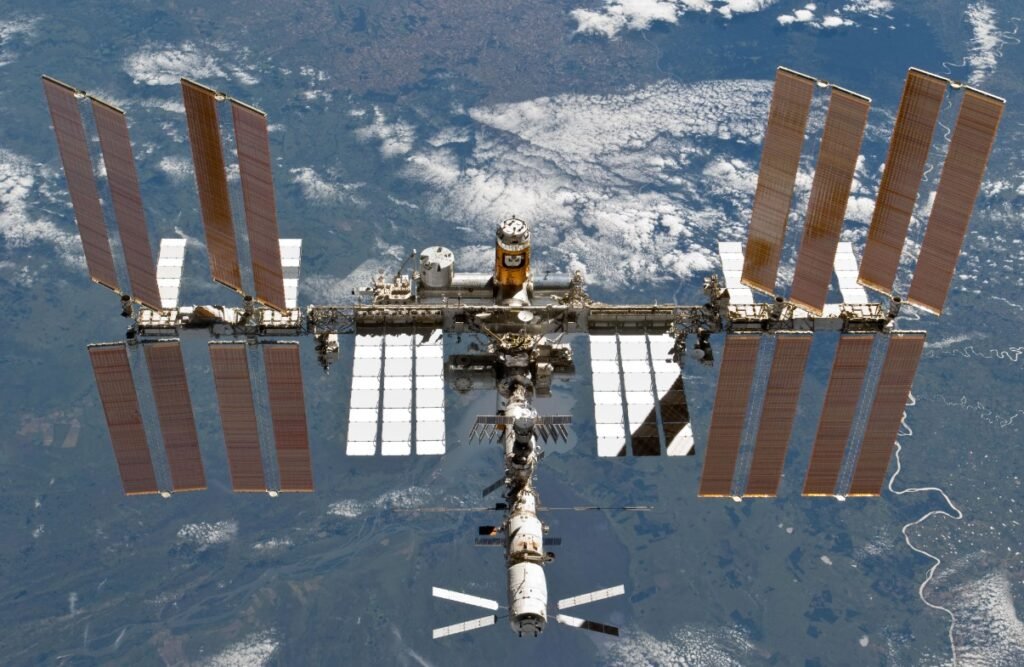The ISS began as a joint project between the United States and Russia, who launched the first two modules, Zarya and Unity, in November and December 1998, respectively. The two modules were connected in orbit by the crew of the space shuttle Endeavour, led by NASA astronaut Robert Cabana, who later became the director of the Kennedy Space Center.
Since then, the ISS has grown to include modules and components from 15 countries, including Canada, Japan, and the European Space Agency. The station has a mass of about 420 tons and a wingspan of 109 meters, making it the largest and most complex structure ever built in space. It orbits the Earth at an average altitude of 400 kilometers, completing 16 revolutions per day.
The ISS has been continuously inhabited by rotating crews of astronauts and cosmonauts since November 2, 2000. The longest stay on the station was by NASA astronaut Scott Kelly, who spent 340 days in 2015-2016 as part of a study on the effects of long-duration spaceflight on the human body and mind.

The scientific achievements of the ISS
The ISS serves as a unique platform for conducting experiments in microgravity, which can reveal new insights into various fields of science, such as biology, physics, medicine, and astronomy. Some of the notable discoveries and innovations made on the ISS are:
- The cultivation of human organs and tissues, such as heart cells, liver cells, and bone cells, using 3D bioprinting and stem cell technology. This could lead to new treatments for diseases and injuries on Earth, as well as support future missions to Mars and beyond.
- The development of new materials and technologies, such as ZBLAN, a type of glass fiber that could revolutionize the telecommunications industry, and the Cold Atom Lab, a device that creates the coldest temperatures in the universe, allowing the study of quantum phenomena.
- The observation of the Earth and the cosmos, using instruments such as the Alpha Magnetic Spectrometer, which searches for dark matter and antimatter, and the Crew Earth Observations, which monitors the changes in the planet’s environment and climate.
- The education and inspiration of the next generation of scientists and explorers, through programs such as the Student Spaceflight Experiments Program, which allows students to design and send their own experiments to the ISS, and the Sally Ride EarthKAM, which allows students to take pictures of the Earth from the station’s windows.
The future of the ISS and beyond
The ISS is expected to operate until at least 2028, according to the current agreements between the partner nations. However, some of the modules and components are aging and may need to be replaced or upgraded in the coming years. The station also faces the challenge of increasing commercial and private activities in low Earth orbit, such as the arrival of new vehicles and habitats from companies like SpaceX, Boeing, and Axiom Space.
The ISS is also seen as a stepping stone for deeper space exploration, especially for the Artemis program, which aims to land the first woman and the next man on the Moon by 2024, and eventually establish a sustainable presence there. The ISS will serve as a testbed for technologies and systems that will be needed for lunar and Martian missions, such as the Orion spacecraft, the Gateway outpost, and the Human Landing System.
The ISS is more than just a scientific laboratory, it is also a symbol of peace and cooperation among nations that have often been in conflict on Earth. The station has fostered a culture of trust and friendship among the crew members and the ground teams, who work together to overcome the challenges and risks of living and working in space. The ISS is a reminder of what humanity can achieve when it works together for a common goal.
